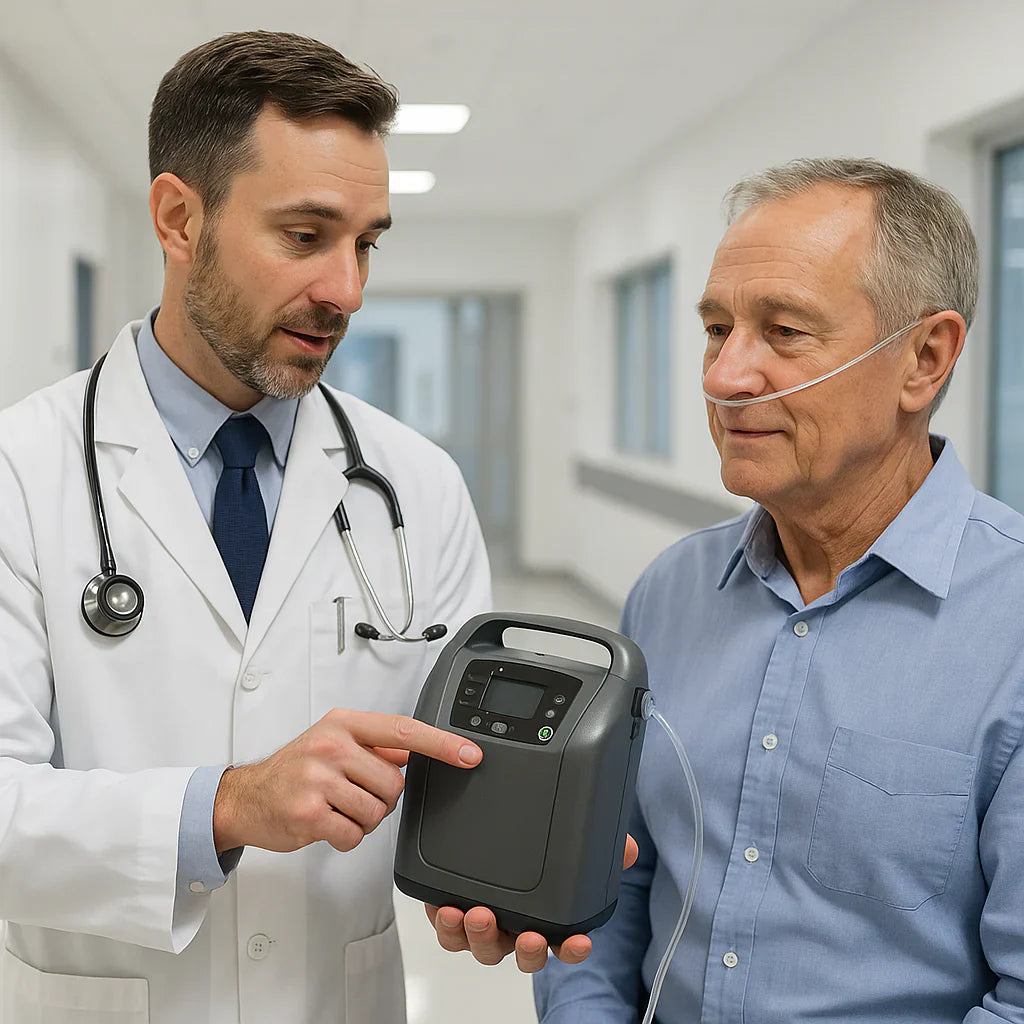Introduction: The Rising Demand for Oxygen Management Solutions
In recent years, the demand for oxygen management products in the U.S. has surged dramatically. This rise is driven by growing awareness of respiratory health, post-pandemic preparedness, and the increasing prevalence of chronic conditions like COPD, asthma, and sleep apnea. According to healthcare market insights, the U.S. medical oxygen equipment industry is expected to grow steadily through 2030, fueled by innovations in portable oxygen machines and oxygen concentrator technology.
With both patients and caregivers seeking safer, more efficient, and travel-friendly oxygen therapy options, understanding the range of available products is essential.
What Are Oxygen Management Products?
Oxygen management products are medical devices designed to deliver supplemental oxygen to individuals with breathing difficulties. They ensure that patients maintain optimal oxygen levels in the bloodstream, supporting vital organs and improving overall quality of life.
These devices are commonly used in hospitals, clinics, and increasingly, home healthcare settings. From oxygen concentrators to oxygen cylinders and portable oxygen systems, the U.S. market offers diverse solutions catering to both clinical and personal needs.
Types of Oxygen Management Products
1. Oxygen Concentrators
An oxygen concentrator extracts oxygen from the air, filtering out nitrogen and delivering a concentrated flow to the patient.
Home oxygen systems are typically larger and designed for stationary use.
Portable oxygen concentrators (POCs) are lightweight, battery-powered, and ideal for mobile users.
Top U.S. models like Philips Respironics, Inogen, and CAIRE offer advanced concentrators with long battery life and FAA approval for air travel.
2. Oxygen Cylinders & Refills
Oxygen cylinders (or tanks) store compressed oxygen gas and remain an essential backup option.
They come in refillable and disposable varieties.
Regular oxygen cylinder refills are crucial for users requiring high-flow therapy or living in remote areas without access to concentrator systems.
3. Portable Oxygen Machines
A portable oxygen machine combines the efficiency of concentrators with the convenience of mobility. Modern designs are ultra-lightweight, user-friendly, and Bluetooth-enabled for app monitoring—making them popular among senior users and frequent travelers.
4. Oxygen Therapy Devices
These include nasal cannulas, oxygen masks, and humidifiers that optimize the oxygen delivery process. Proper use of oxygen therapy devices ensures comfort and precise oxygen concentration levels.
Key Features & Benefits
Continuous Oxygen Supply: Modern devices guarantee uninterrupted flow for home or hospital use.
Energy Efficiency: Advanced concentrators consume less power, ideal for long-term use.
Mobility & Portability: Compact portable oxygen concentrators enhance user freedom and independence.
Smart Monitoring: Integrated digital displays and smartphone connectivity for easy oxygen tracking.
Safety & Reliability: Built-in alarms for low oxygen purity, pressure issues, or power failure.
These features make medical oxygen equipment in the USA not just essential—but also increasingly intelligent and patient-friendly.
Latest Technological Innovations in the U.S.
The U.S. oxygen equipment market is witnessing a wave of AI-driven innovations and smart design advancements:
Bluetooth-enabled monitoring: Patients can track oxygen purity, flow rates, and battery life via mobile apps.
Miniaturized compressor technology: Reduces device size and noise for seamless use in public settings.
Automated oxygen flow adjustment: Sensors automatically adjust oxygen delivery based on user breathing patterns.
Eco-friendly designs: Manufacturers now emphasize recyclable materials and energy-saving mechanisms.
Leading brands like Inogen, Invacare, Philips Respironics, and DeVilbiss Healthcare continue to drive this transformation, making oxygen therapy more accessible and convenient for all.
Buying Guide: How to Choose the Right Oxygen Device
Choosing the best oxygen management product depends on several key factors:
Medical Requirements:
Consult your healthcare provider to determine oxygen flow rate, duration, and usage frequency.
Lifestyle Needs:
For active users, a portable oxygen machine offers flexibility.
For stationary users, a home oxygen concentrator ensures continuous supply.
Battery Life & Power Options:
Look for dual power modes (AC/DC) and long-lasting batteries for outdoor use.
Maintenance & Refills:
Choose devices that are easy to clean and supported by reliable oxygen cylinder refill services.
Warranty & After-Sales Support:
Opt for brands that provide nationwide service centers and 24/7 customer support.
Trusted Brands in the U.S. Market
Several companies dominate the U.S. medical oxygen equipment landscape due to their reliability, innovation, and user satisfaction:
Brand Specialty
Inogen Portable oxygen concentrators with advanced mobility features
Philips Respironics Smart oxygen systems with digital monitoring
CAIRE Inc. Compact oxygen units with medical-grade efficiency
Invacare Versatile oxygen therapy devices for home and hospital
DeVilbiss Healthcare Durable, cost-effective oxygen concentrators
Each of these brands has contributed to making oxygen therapy more efficient, affordable, and user-centered.
Conclusion: Breathe Easy with the Right Oxygen Solution
As health awareness grows across the United States, investing in the right oxygen management product has never been more important. Whether you’re a patient seeking home oxygen therapy or a caregiver looking for medical-grade reliability, today’s innovations offer portable, intelligent, and affordable oxygen systems for every need.

